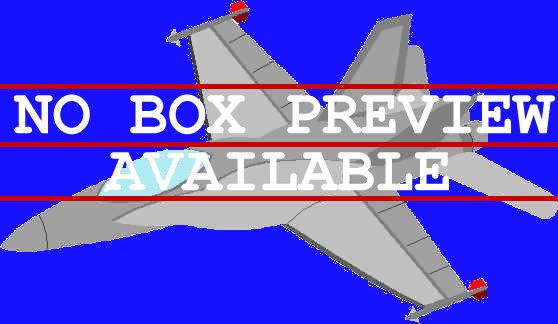
ESCI 1:72 A-4G "AUSSIE" SKYHAWK

Reviewer: Myself (braithy@bigpond.com)
In 1965 the Australian Government placed an order for 10 A-4 Skyhawks to replace the ageing Sea Venoms. These were A-4E variants and deliveries were expected to commence in 1967, where they would serve alongside Grumman Trackers and Westland Wessex on HMAS Melbourne (a small aircraft carrier in RAN service). The skyhawks were later reidentified as A-4G's, based on the US Navy's A-4F variant but incorporating some modifications to meet Australian requirements, and of these 10, eight were single seat 'fleet defence' attack aircraft with two double-seat TA-4G trainers. The A-4G were fitted to carry bombs, rockets and also AIM-9B sidewinders for fleet defence duties. After deliveries finished in 1967 (HMAS Melbourne went over to San Diego and hoisted them aboard), a further identical order of 10 aircraft (8 s/s & 2 d/s again) was made in 1970, this time they were USN (T)A-4F variants converted to the G Model as Australia required. All 20 aircraft were delivered in standard US Navy light grey and white colours. Decorative paintwork provided variations to this but were repainted in 1979 in the wrap around aircraft grey and light admiralty grey camouflage (reproduced in this kit). All surviving Skyhawks were retired from service in the mid-eighties and many were transferred to the RNZAF where they now serve, after further modifications as A-4K variants.
The kit comes packaged in Esci's familiar (oversized) red box with crisp grey injected mold plastic containing finely raised panel lines and etched aircraft lines (flaps etc). Some rivet detail is also evident especially in snake-lines near the wingtips. The instructions is in the form of a large fold-out sheet containing just over half a dozen assembly steps and paint colour name/number call-out from the Humbrol range.
Cockpit detail is reasonable with a seat that needs to be put together placed into a bathtub as well as stick, rear bulkhead and instrument panel - decals are supplied for side and main panels. Wheel well detail again is reasonable, albeit nothing to write home about. The instructions suggest 20g weight in the nose, I'd recommend 25-30g.
Construction is fairly straight forward and parts fit well together with a minimum of fuss - a bit of filler is required for wing roots, intake connections and undercarriage doors (the latter for in-flight configuration). Unfortunately, only the weapons stores give the modelmaker the any choice in options, as the canopy is one-piece and other possibilities (flaps, speed brakes, etc) are molded on. Weapons choice comes in the form of rocket pods, cluster bombs and fuel tanks on outer wing, centreline and inner wing pylons respectively. I left the cluster bombs off my version but attached the others.
The tailplanes are easily misaligned, remember that they are not angled up/down (as correctly shown in the instructions) but the way the kit is molded could make you think otherwise. As a result a bit of filler will be needed afterward. The A-4G could be fitted with two types of refuelling probes, one which runs along the side of the fuselage and extends past the nose, while the other (which is provided in the kit) runs along the fuselage then suddenly juts away from the body running parralell and ending with the nose. The instructions are not very good in showing you the exact positioning and are inaccurate insofar as much as they show the probe extending well beyond the nose. The colour scheme diagrams are a better example of how the probe should sit, although these still show it going well beyond the nose which is wrong.
The kit reproduces two RAN (Royal Australian Navy) versions in quoted overall Sea Grey/Light Gull Grey camouflage that looks really nice if done right. According to better reference sources, the wrap around scheme should be Aircraft Grey (Matt BS 381C-693) and Light Admiralty Grey (Matt BS 381C-697) - I think Esci's colour callouts are not 100% accurate and would suggest you check your references. Both examples are from VF805 (805 Sqn) with one incorporating the renowned 'checkmates' insignia on the fin - represented by a black chess knight. The decals are nice quality and conform easily - their only criticism is carrying a tad too much carrier film. Correctly the kit calls for roundels only to appear on upper wing surfaces and on fuselage sides for the wrap around camouflage scheme, but incorrectly shows the distinctive kangaroo roundels pointing toward (or facing) each other on the upper wing surface. In actual fact, they should both be pointing/facing toward the front of the aircraft with their feet closest to the fuselage, being upside down or mirror image to each other.
The finished product is very nice and my only concerns are the exact shape of the tailfin - which appears to have been squared off too much - the dorsal fin leading spine whose bend should be sharpened and refuelling probe - which (unlike the instruction sheet) finishes about a millimetre too short. To scale, length is spot on but span is again about a millimetre undersized. Be wary of the tailplanes as pointed out above, otherwise a very nice kit, highly recommended, that should suit all skill levels. Of course a further project with this same kit could be RNZAF colours.
Reference: A good reference source for this model is authored by Stewart Wilson titled "Phantom, Hornet & Skyhawk" in Australian service - part of the "Australian Airpower" series. You can order this from www.ausaviation.com.au web site.
Back to home
Kit Review Index: 1/72
1/48